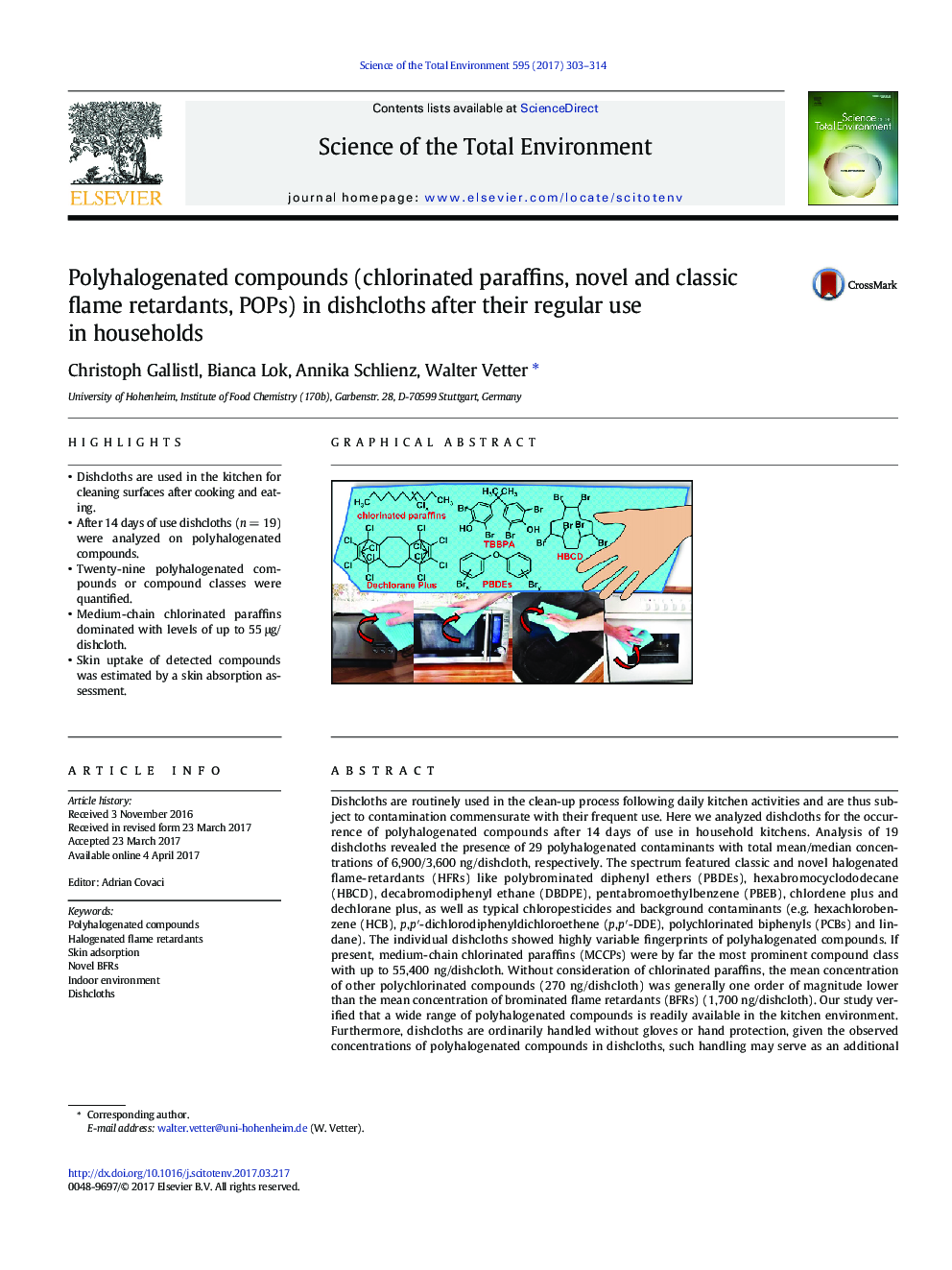| کد مقاله | کد نشریه | سال انتشار | مقاله انگلیسی | نسخه تمام متن |
|---|---|---|---|---|
| 5751286 | 1619701 | 2017 | 12 صفحه PDF | دانلود رایگان |

- Dishcloths are used in the kitchen for cleaning surfaces after cooking and eating.
- After 14 days of use dishcloths (n = 19) were analyzed on polyhalogenated compounds.
- Twenty-nine polyhalogenated compounds or compound classes were quantified.
- Medium-chain chlorinated paraffins dominated with levels of up to 55 μg/dishcloth.
- Skin uptake of detected compounds was estimated by a skin absorption assessment.
Dishcloths are routinely used in the clean-up process following daily kitchen activities and are thus subject to contamination commensurate with their frequent use. Here we analyzed dishcloths for the occurrence of polyhalogenated compounds after 14Â days of use in household kitchens. Analysis of 19 dishcloths revealed the presence of 29 polyhalogenated contaminants with total mean/median concentrations of 6,900/3,600Â ng/dishcloth, respectively. The spectrum featured classic and novel halogenated flame-retardants (HFRs) like polybrominated diphenyl ethers (PBDEs), hexabromocyclododecane (HBCD), decabromodiphenyl ethane (DBDPE), pentabromoethylbenzene (PBEB), chlordene plus and dechlorane plus, as well as typical chloropesticides and background contaminants (e.g. hexachlorobenzene (HCB), p,pâ²-dichlorodiphenyldichloroethene (p,pâ²-DDE), polychlorinated biphenyls (PCBs) and lindane). The individual dishcloths showed highly variable fingerprints of polyhalogenated compounds. If present, medium-chain chlorinated paraffins (MCCPs) were by far the most prominent compound class with up to 55,400Â ng/dishcloth. Without consideration of chlorinated paraffins, the mean concentration of other polychlorinated compounds (270Â ng/dishcloth) was generally one order of magnitude lower than the mean concentration of brominated flame retardants (BFRs) (1,700Â ng/dishcloth). Our study verified that a wide range of polyhalogenated compounds is readily available in the kitchen environment. Furthermore, dishcloths are ordinarily handled without gloves or hand protection, given the observed concentrations of polyhalogenated compounds in dishcloths, such handling may serve as an additional exposure pathway for human users. Evaluation of this thesis was supported by conduction of a dermal uptake assessment.
447
Journal: Science of The Total Environment - Volume 595, 1 October 2017, Pages 303-314